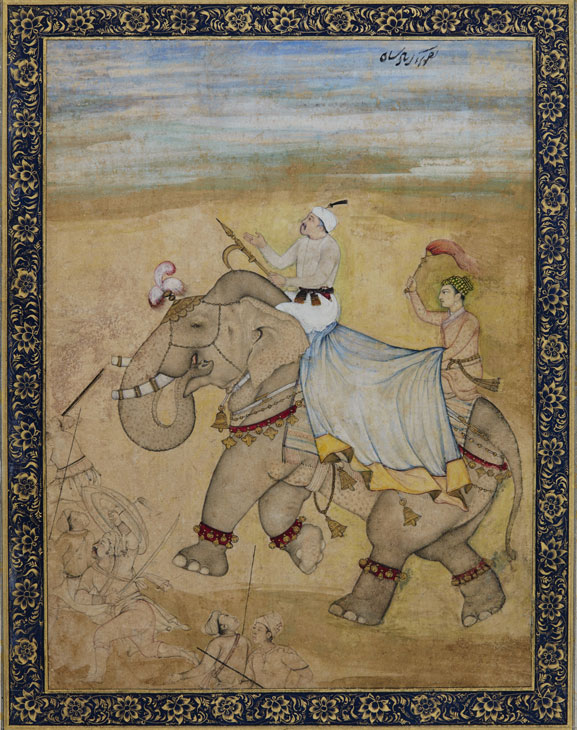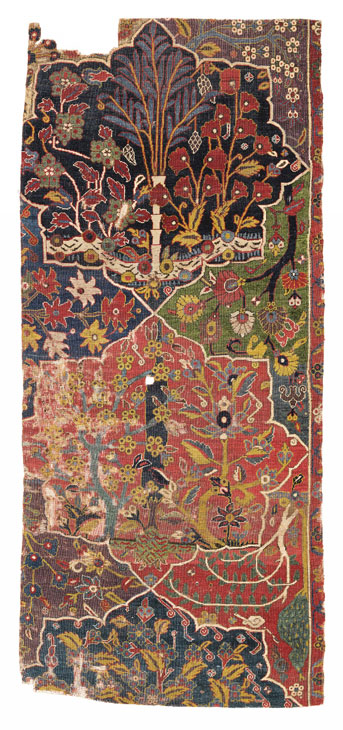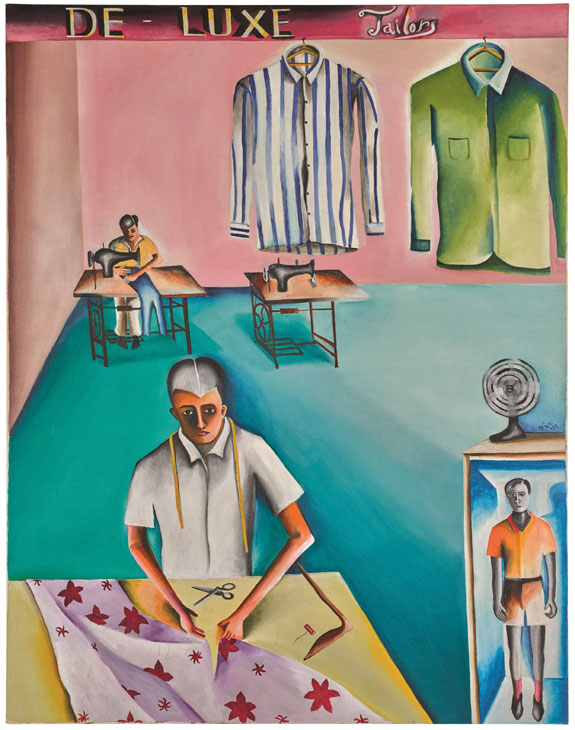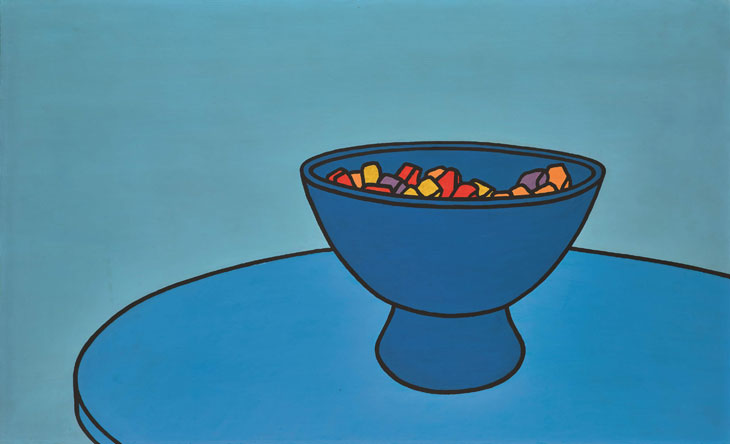Howard Hodgkin belongs to a distinguished tradition of artist-collectors – not least among them his fellow knights, Sir Peter Paul Rubens, Sir Anthony Van Dyck and Sir Joshua Reynolds. It is hard to imagine now, but back in the 1960s the young painter was probably more admired in contemporary art circles for his ‘eye’ as a collector of art rather than as a maker of it, his own work being inconveniently difficult to pigeonhole. By the 1980s, the still-growing collection of Mughal-period Indian paintings and drawings – traditionally and misleading known as miniatures – that he began to amass at the tender age of 14 was being exhibited. These days, it is recognised as one of the greatest of its kind. Alongside this primary collection, however, Hodgkin formed a parallel and very private holding. The lion’s share of this is being offered by Sotheby’s on 24 October, six months after the artist’s death aged 84.
Emperor Akbar riding an elephant on a hunting expedition (early 17th century), Mughal. Sotheby’s London, £12,000–18,000. © Sotheby’s

It is, in its way, an exemplary collection, though Hodgkin would no doubt have winced to hear me say such a thing. It is testimony to an artist who spent a great deal of time looking at all manner of works of art, in museums, shops, galleries and fairs, and who seemed to seek from them what he demanded of his own painting. This collection is remarkable for its breadth and its quality, but what astounded Hodgkin’s visitors was the sheer presence of the best of the pieces and the visceral and emotional responses that they elicited. Uniting all of them, whatever their value, is an underlying feeling for form, patternmaking and rhythm as well as an intensity of colour.
Fragment from the Von Hirsch Garden Carpet (17th-century), Northwest Persia. Sotheby’s London, £80,000–120,000. © Sotheby’s

On offer is baroque sculpture and sculptural furniture, rich pietra dura marbles, dazzling Iznik tiles, and rare carpets and textiles. The jewel in the crown here is a fragment of one of the boldest, most original and exuberantly coloured of all Persian carpets, itself a quarter of the fragment of the ‘garden’ carpet once owned by the legendary connoisseur Robert von Hirsch (estimate £80,000–£120,000). Perhaps most exemplary aspect of all Hodgkin’s collecting, however, was that he bought by eye and instinct alone. In fact, he preferred not to know too much and was rather annoyed after decades of looking when, by default, he did.
His buying veered between the obsessional and the recreational – masterpieces and ‘costume jewellery for the home’. Certainly it served as a necessary antidote to the solitary act of painting. That was his priority; the primary collection of Indian paintings and drawings, honed over seven decades, was another. The latter remains in store, looking for a home (provenance issues preclude it going to a UK museum). There are, however, some 98 other Indian miniatures under the hammer.
De-luxe tailors (1972), Bhupen Khakhar. Sotheby’s London, £250,000–350,000. © Sotheby’s

The sale’s most highly estimated lots are paintings by Hodgkin’s friends Patrick Caulfield (Sweet Bowl, 1966, £300,000–£500,000) and Bhupen Khakhar (De-Luxe Tailors, 1972, £250,000–£350,000), whose work Hodgkin championed. Among the least expensive, with estimates starting at £400, are some of the artist’s proofs of his own prints. While these as well as the miniatures (estimates from around £200) may serve to draw in a new generation of collectors, the sale also comes with an inbuilt warning. For these will be purchases that can only be put down to the compulsive, addictive acquisitiveness familiar to every real collector. As Hodgkin himself put it: ‘All collectors are prisoners.’
Sweet Bowl (1966), Patrick Caulfield. Sotheby’s London, £300,000–500,000. © Sotheby’s

The ‘Howard Hodgkin: Portrait of the Artist’ sale takes place at Sotheby’s London on 24 October.



